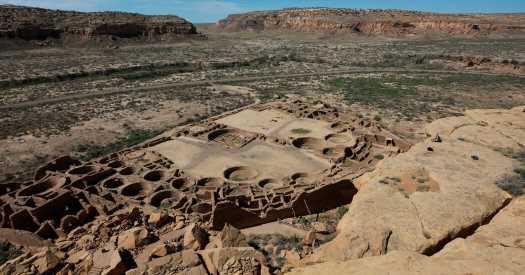Biden Administration Bans Drilling Around Native American Cultural Site
The News
The Biden administration took action on Friday to block new oil and gas leasing on federal land around Chaco Canyon in New Mexico, one of the nation’s oldest and most culturally significant Native American sites. Interior Secretary Deb Haaland announced that her agency would withdraw public lands within a 10-mile radius of Chaco Canyon and the area around it, known as Chaco Culture National Historical Park, from access to new oil and gas leasing for 20 years, following through on a 2021 pledge by President Biden to protect the area from drilling. The move will not affect existing oil and gas leases on the land or drilling on private property within the 10-mile radius.
The plan laid out by Ms. Haaland, the first Native American cabinet secretary, came after decades of tribal requests. It is intended to underscore President Biden’s efforts to focus on Native American issues and expand conservation of public lands. But it has also generated opposition from Republicans and New Mexico’s oil and gas industry. The announcement comes during a week when environmental activists were enraged by the Biden administration’s move to expedite a 300-mile natural gas pipeline in West Virginia as part of the deal to raise the debt ceiling.
Why It Matters
The Chaco Canyon park, an area of roughly 30,000 acres in the high desert mesas of northwest New Mexico, was established in 1907 by President Theodore Roosevelt. A UNESCO World Heritage site, it is home to a vast network of pre-Columbian ruins. Between the ninth and 13th centuries, the area was a center of Pueblo culture, with multiple settlements of multistory houses and sacred sites. But for the past decade, Pueblo and other Native groups have worried that oil and gas projects were threatening the park.
While Congress has enacted some short-term drilling bans around the park, there has been no long-term or permanent policy to block drilling at its edges.
“Today marks an important step in fulfilling President Biden’s commitments to Indian Country, by protecting Chaco Canyon, a sacred place that holds deep meaning for the Indigenous peoples whose ancestors have called this place home since time immemorial,” said Ms. Haaland in a statement.
This year, Mr. Biden created a new national monument, Spirit Mountain, in Nevada, insulating from development a half-million acres that are revered by Native Americans. He also restored and expanded protections for Bears Ears National Monument and Grand Staircase-Escalante in Utah, sites that are sacred to Native Americans and had been opened to mining and drilling by the Trump administration.
Background
The Bureau of Land Management has not issued an oil and gas lease within the 10-mile buffer around Chaco Canyon for approximately 10 years, and New Mexico halted mineral leasing around Chaco Canyon through a state-level moratorium in 2019. A federal moratorium on new mining claims has been in place since January 2022, when the Interior Department published a notice of the proposed withdrawal in the Federal Register. The proposal was open to a 120-day public comment period that included six public meetings and yielded more than 110,000 verbal and written comments. That input, along with consultations with 24 tribal nations, helped shape the final plan, the agency said.
What’s Next
Oil and gas drilling is a major component of New Mexico’s economy. At the time Mr. Biden announced his plans to protect the Chaco Canyon area, a spokesman for the New Mexico Oil & Gas Association called the move “arbitrary” and said it would limit economic opportunities in that part of the state, possibly for generations to come. It is unclear whether the industry will try to challenge the new protections.
Coral Davenport covers energy and environmental policy for the climate desk from Washington. She was part of a Times team that was a finalist for the Pulitzer Prize for distinguished public service journalism in 2020, and part of a Times team that received Columbia University’s John B. Oakes award for distinguished environmental journalism in 2018. @CoralMDavenport • Facebook
Source: Read Full Article


